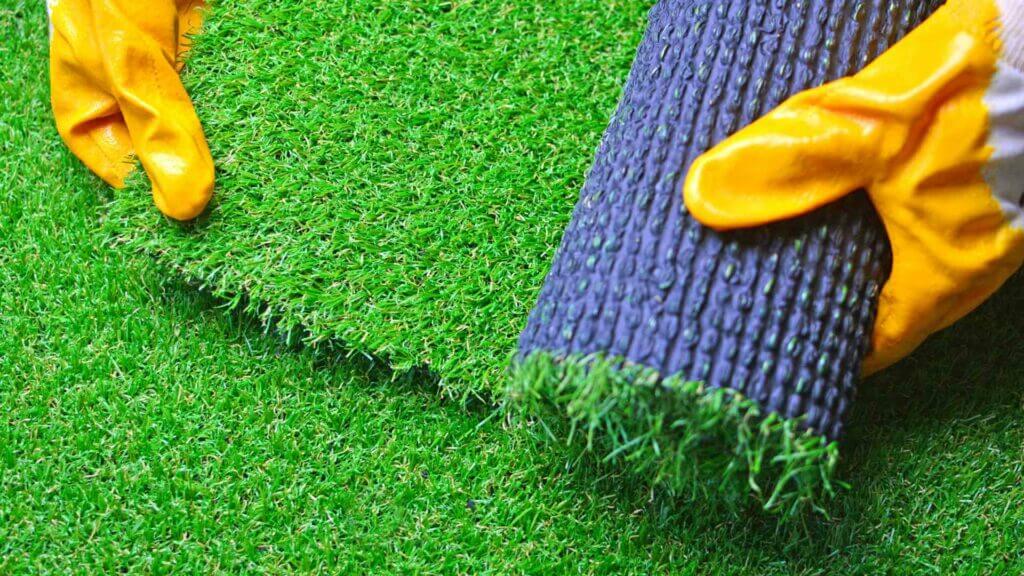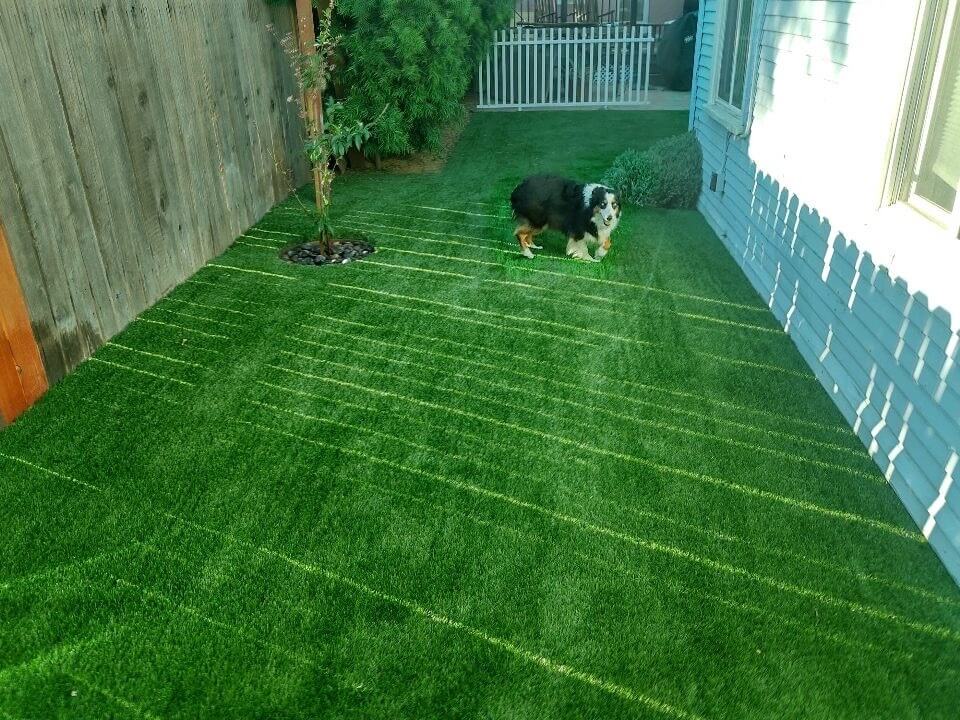Artificial grass, synthetic turf, is a popular alternative to traditional natural grass for landscaping and sports fields. With advancements in technology, the quality and realism of artificial grass have improved dramatically in recent years, making it a practical solution for various applications. When choosing artificial grass, it’s important to consider your specific needs and preferences, such as the intended use, desired texture, and budget. By considering these factors and comparing different products, you can find the right artificial grass for your project and enjoy a low-maintenance, sustainable solution for years to come.
What is artificial grass, and what are its benefits?
Artificial grass, also known as synthetic turf, is a surface made of synthetic fibers designed to look like natural grass. It is typically used for landscaping, sports fields, and residential lawns. The main benefits of artificial grass are its low maintenance requirements, durability, and versatility. Unlike natural grass, artificial grass does not need to be watered, mowed, or treated with pesticides, making it a cost-effective and environmentally friendly option. Additionally, it can be used in various climates and terrains, making it suitable for urban and rural areas. Artificial grass also provides a consistent playing surface for sports and is safe for children and pets. Overall, the benefits of artificial grass make it an attractive alternative to natural grass for many people.

How can artificial grass help me with my garden or lawn?
Artificial grass can offer several benefits to homeowners who are looking to improve the look of their garden or lawn. Firstly, it requires no maintenance, such as mowing, watering, or fertilizing, making it ideal for people who want a low-maintenance yard. Secondly, it is durable and long-lasting, so it won’t fade or wear out quickly, even with heavy foot traffic. Additionally, artificial grass is an eco-friendly option, as it reduces water usage and eliminates the need for chemicals and pesticides. Furthermore, it is ideal for people who have pets as it does not get damaged by pet urine and feces and is also easier to clean. Lastly, artificial grass can be used in various applications, such as for sports fields, playgrounds, balconies, and roof terraces, making it a versatile option for any outdoor space.
The different types of artificial grass
There are artificial grass types that come in a variety of colors and textures, from natural turf to rubber. Synthetic turf is the most expensive type, but it’s also the most durable. It can last for up to six months without maintenance but needs to be replaced every three years. Rubber artificial grass is less expensive than turf and doesn’t require maintenance, but it may not last as long because it wears down more quickly than turf.
There are also artificial grass types that are specifically designed for use in sports facilities. These turf types have a higher quality than artificial rubber grass and can last several seasons with regular maintenance. Sports turf is the most expensive type of artificial grass, but it’s also the best quality.
Another type of artificial grass is called rubber mulch. This artificial turf consists of compressed natural turf that’s covered in a layer of rubber. Rubber mulch is cheaper than sports turf and can be used in areas that don’t have access to real grass, such as sidewalks or driveways.
How do I choose the right type of artificial grass for my needs?
Choosing the right type of artificial grass for your needs can be challenging. There are various factors, such as the intended use, climate, and budget. For example, if you’re using artificial grass for sports, you should choose a type that provides good traction and durability and meets regulations. If you live in a hot climate, you should select a grass type with good UV protection. If you have a tight budget, you may want to look for a less expensive option that still meets your needs. To ensure you make the best choice, it’s recommended that you research, compares different products, and consult with a professional in the field.
Additionally, consider the look and feel you want to achieve. Artificial grass comes in various colors, textures, and lengths. If you want a realistic look, you can choose a type with a natural appearance and soft feel. If you want a low-maintenance option, you can opt for a shorter-length grass that requires less grooming. Finally, make sure the artificial grass you choose is made from high-quality materials that are durable and long-lasting. Take the time to read reviews and product specifications to get an idea of the quality of the grass you’re interested in.
The installation instructions for artificial grass?
Artificial grass installation is a straightforward process that can be completed in a few steps. First, prepare the surface by removing any grass or debris, and level the ground as needed. Then, lay down a weed barrier to prevent growth underneath the artificial grass. Next, unroll the artificial grass and trim it to size, allowing for a small perimeter of about 1-2 inches for expansion. Secure the artificial grass by applying adhesive around the edge, or use infill material such as sand or rubber to keep it secure. Finally, brush the artificial grass in opposite directions to achieve a natural-looking appearance. With these steps, you can have a beautiful, low-maintenance artificial lawn in no time.
To install artificial grass, first, you will need a drill, some screws and nails, turf sealant, and water. Drill a hole at least 3 feet wide and long enough to fit the artificial turf frame. Drive screws into the turf frame at regular intervals until it is secure. Pour about 2 inches of turf sealant around each screw hole. Turn on the hose and wet down all sides of the artificial lawn, so it is completely saturated. Leave it to dry for 24 hours before using.

Are there any side effects to using artificial grass?
Artificial grass, synthetic turf, is a popular alternative to natural grass for landscaping and sports fields. While it has many advantages, such as low maintenance requirements and a longer lifespan, there are also potential side effects to using artificial grass. One concern is that the materials used in synthetic turf, such as rubber and plastic, can release harmful chemicals into the environment and potentially into the air that people breathe. Additionally, the surface of artificial grass can become very hot in direct sunlight, which can be a hazard for pets and children playing on it. Furthermore, synthetic grass fibers can cause skin irritation and scratches if proper safety gear is not used. While these side effects can be mitigated with appropriate installation and maintenance, it’s important to weigh the pros and cons before deciding on using artificial grass.
Warranty policy for artificial grass?
The warranty policy for artificial grass guarantees that the product will perform as promised for a specified time. The length of the warranty varies depending on the manufacturer but typically ranges from 8 to 15 years. It covers issues such as fading, loss of pile height, and seam separation. Some warranties may include coverage for damage caused by ultraviolet rays, pets, and extreme weather conditions. To take advantage of the warranty, customers must properly install and maintain the artificial grass according to the manufacturer’s instructions. In the event of a warranty claim, the manufacturer may repair or replace the affected area at no cost to the customer. It’s important to carefully review the warranty before purchasing artificial grass to ensure that it meets your expectations and provides adequate protection for your investment.
Conclusion
Choosing the right artificial grass product for your needs involves considering several factors, including the intended use, the expected foot traffic, the budget, the climate and weather conditions, and personal preferences. It’s important to do thorough research and seek the advice of experts before making a purchase. Consider the quality of materials, durability, and whether the product is designed for indoor or outdoor use. Be sure to consider the maintenance and cleaning requirements, as well as any warranties or guarantees offered by the manufacturer. By taking these factors into account, you can ensure that you select the best artificial grass product for your specific needs and get the most value for your investment.At Ruff n Tuff Turf, we offer artificial grass products designed specifically for commercial and residential use. Our synthetic turf is made with high-quality materials that are durable and easy to maintain, making it a great choice for locations that see a lot of foot traffic. Our products are also designed for indoor or outdoor use, so you can choose the option that best suits your needs. We offer warranties on all of our artificial grass products, as well as free installation services in most cases.
The post Artificial Grass: How To Choose The Right Product For Your Needs appeared first on Ruff n Tuff Turf.

